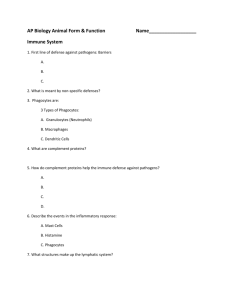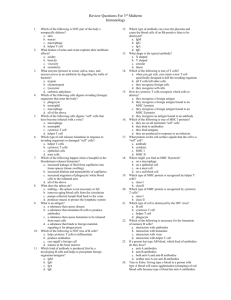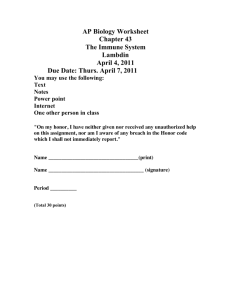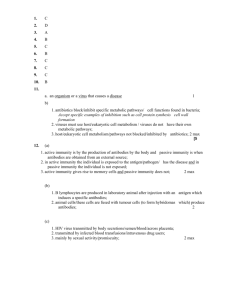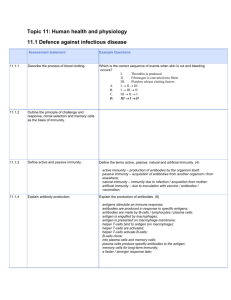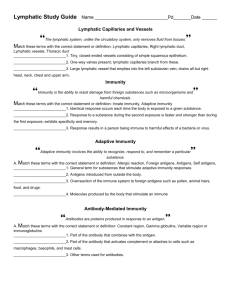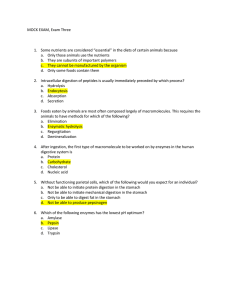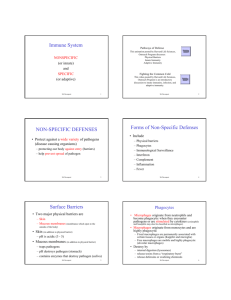Lymphatic Quiz
advertisement
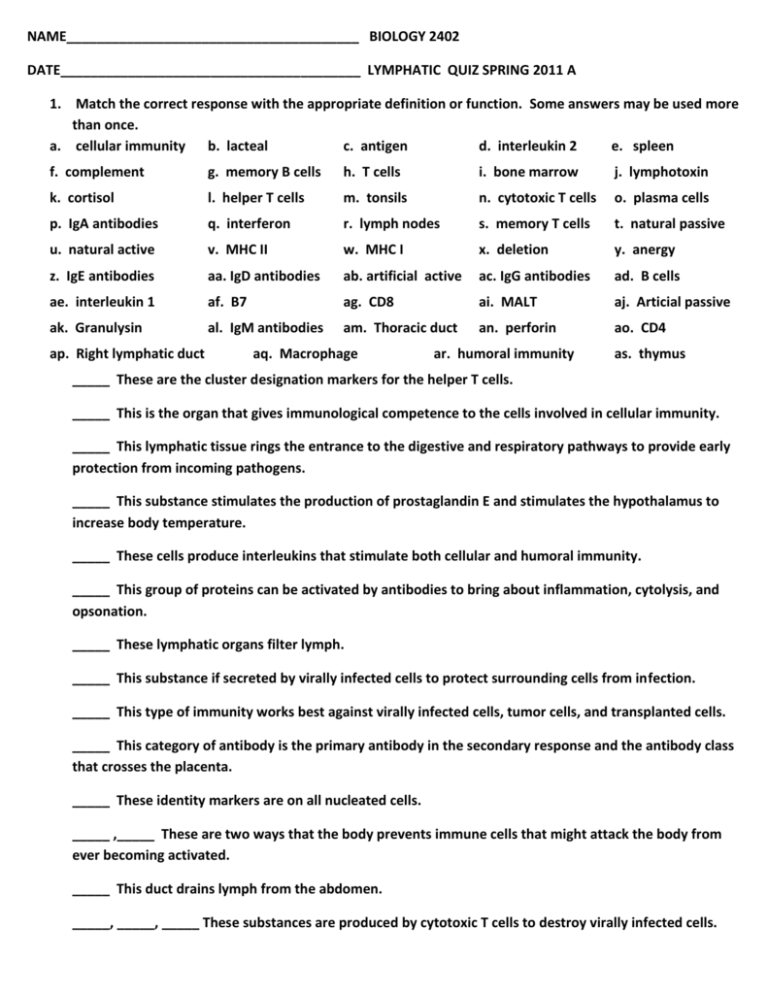
NAME_______________________________________ BIOLOGY 2402 DATE________________________________________ LYMPHATIC QUIZ SPRING 2011 A 1. Match the correct response with the appropriate definition or function. Some answers may be used more than once. a. cellular immunity b. lacteal c. antigen d. interleukin 2 e. spleen f. complement g. memory B cells h. T cells i. bone marrow j. lymphotoxin k. cortisol l. helper T cells m. tonsils n. cytotoxic T cells o. plasma cells p. IgA antibodies q. interferon r. lymph nodes s. memory T cells t. natural passive u. natural active v. MHC II w. MHC I x. deletion y. anergy z. IgE antibodies aa. IgD antibodies ab. artificial active ac. IgG antibodies ad. B cells ae. interleukin 1 af. B7 ag. CD8 ai. MALT aj. Articial passive ak. Granulysin al. IgM antibodies am. Thoracic duct an. perforin ao. CD4 ap. Right lymphatic duct aq. Macrophage ar. humoral immunity as. thymus _____ These are the cluster designation markers for the helper T cells. _____ This is the organ that gives immunological competence to the cells involved in cellular immunity. _____ This lymphatic tissue rings the entrance to the digestive and respiratory pathways to provide early protection from incoming pathogens. _____ This substance stimulates the production of prostaglandin E and stimulates the hypothalamus to increase body temperature. _____ These cells produce interleukins that stimulate both cellular and humoral immunity. _____ This group of proteins can be activated by antibodies to bring about inflammation, cytolysis, and opsonation. _____ These lymphatic organs filter lymph. _____ This substance if secreted by virally infected cells to protect surrounding cells from infection. _____ This type of immunity works best against virally infected cells, tumor cells, and transplanted cells. _____ This category of antibody is the primary antibody in the secondary response and the antibody class that crosses the placenta. _____ These identity markers are on all nucleated cells. _____ ,_____ These are two ways that the body prevents immune cells that might attack the body from ever becoming activated. _____ This duct drains lymph from the abdomen. _____, _____, _____ These substances are produced by cytotoxic T cells to destroy virally infected cells. 2. Match the correct response with the appropriate definition or function. Some answers may be used more than once. a. humoral immunity b. lacteal c. antigen d. interleukin 2 e. spleen f. complement g. memory B cells h. T cells i. bone marrow j. lymphotoxin k. cortisol l. helper T cells m. tonsils n. cytotoxic T cells o. plasma cells p. IgA antibodies q. interferon r. lymph nodes s. memory T cells t. natural passive u. natural active v. MHC II w. MHC I x. deletion y. anergy z. IgG antibodies aa. IgD antibodies ab. artificial active ac. IgE antibodies ad. B cells ae. interleukin 1 af. CD4 ag. B7 ai. MALT aj. Articial passive ak. Granulysin al. IgM antibodies am. Thoracic duct an. perforin ao. thymus ap. Right lymphatic duct aq. Macrophage ar. cellular immunity as. CD8 _____ , _____, _____, _____, _____, _____ These substances are cytokines. _____ This is the organ that gives B cells their immunological competence. _____ This is the antigen presenting cell that presents antigens to helper T cells. _____ This is the type of identity markers found on antigen presenting cells. _____ This group of antibodies binds to basophils and mast cells in an allergic reaction. _____ This is the type of adaptive immunity derived from a flu vaccine. _____, _____ These cells are involved in the secondary and Tcell recall responses. _____ These antibodies are found lining mucous membranes. _____ These are the antibody producing cells. _____ This cell produces interleukin 2. _____ This is the name for any molecule that the body perceives as foreign. _____ An antivenom for snake bites or scorpion stings is an example of this type of adaptive immunity. _____ This is the name for the lymphatic tissue found along the respiratory and digestive tracts. _____ Blood borne pathogens are destroyed by B and T cells as the blood flows through this organ. 3. CD 4 cells are also called helper/cytotoxic Tcells. CD4 cells recognize MHCII/MHCI proteins on macrophages. After costimulation helper T cells produce ______________________ to costimulate cytotoxic T cells and B cells. CD8 cells are also called cytotoxic/helper T cells. CD8 cells recognize MHII/MHI proteins. After costimulation by the cytokine _________________________ they produce _________________ and __________________ to attack virally infected cells and tumor cells. B cells respond to antigens and are costimulated by the cytokine _______________________. When costimulated they develop into _____________________ cells and ______________________ cells. The ___________________ cells produce antibodies that attack extracellular antigens by activating the formation of the ___________________ proteins which causes antigen destruction by ________________________ and __________________________.
